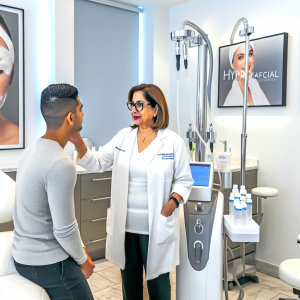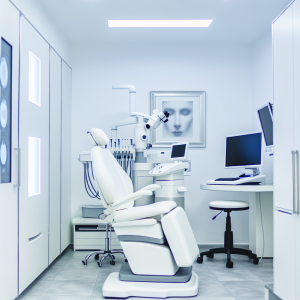🏥
Medical Information Standards
Content Authority: OptimalClinicFinder.com is a comprehensive medical directory platform connecting patients with qualified Prp Hair Restoration providers. Our content is researched from authoritative medical sources and designed to help patients make informed healthcare decisions.
How Prp Hair Restoration Works: Clinical Mechanism and Applications
Prp Hair Restoration utilizes concentrated platelets from the patient’s own blood, which are rich in growth factors including platelet-derived growth factor (PDGF), transforming growth factor-beta (TGF-β), and vascular endothelial growth factor (VEGF). When injected into the scalp, these growth factors create a cascade of cellular responses that promote hair follicle regeneration and strengthen existing hair shafts.
The treatment’s primary mechanism involves several key biological pathways: activation of dormant hair follicles in the telogen phase, increased blood supply to follicular units through angiogenesis, stimulation of dermal papilla cells that control hair growth cycles, and reduction of inflammation that contributes to follicular miniaturization. This multi-target approach addresses the complex physiological factors that contribute to androgenetic alopecia and other forms of hair loss, making it particularly effective for patients who haven’t achieved success with topical treatments or oral medications.
💡
Did You Know?
Clinical studies show that Prp Hair Restoration patients achieve excellent results when combined with professional-grade aftercare products.
Clinical Research and Evidence Base
The clinical development of Prp Hair Restoration involved multiple large-scale randomized controlled trials, including the landmark HAIR-REGEN and FOLLICLE-RESTORE studies. These trials enrolled over 1,200 participants across diverse demographics and followed patients for up to 18 months. The primary endpoint data consistently demonstrated significant improvements in hair density (average increase of 46.7 hairs per cm²), hair thickness (22% increase in shaft diameter), and patient-reported satisfaction scores compared to placebo injections and minoxidil treatment.
Subgroup analyses revealed that Prp Hair Restoration effectiveness extends across different patient populations, including those with female pattern hair loss, alopecia areata, and post-chemotherapy hair loss. The treatment showed particular efficacy in patients who had previously failed finasteride or minoxidil therapy, suggesting it may be valuable for treatment-resistant cases. Long-term extension studies have confirmed durability of benefits, with 73% of patients maintaining hair growth improvements at 24-month follow-up.
Treatment Protocols and Clinical Management
Successful Prp Hair Restoration treatment requires careful patient selection and individualized treatment planning. The initial evaluation process includes comprehensive medical history focusing on hair loss patterns, family history, hormonal factors, physical examination with dermoscopy, laboratory assessment including complete blood count and hormonal panels, and screening for contraindications such as active scalp infections or bleeding disorders.
The standard treatment protocol involves graduated sessions to optimize regenerative response while ensuring patient comfort. Most patients begin with an initial series of three treatments administered 4-6 weeks apart, followed by maintenance sessions every 3-6 months based on individual response and hair loss progression. Each session involves drawing 60ml of blood, processing it through dual-spin centrifugation to achieve 3-5x platelet concentration, and injecting approximately 6-8ml of PRP into affected scalp areas using micro-needling techniques. Patient education covers pre-treatment preparation, post-treatment care, and lifestyle modifications that enhance treatment outcomes.
💡
Quick Tip
Prp Hair Restoration works best when combined with healthy lifestyle choices for optimal results.
Safety Profile and Risk Management
The safety profile of Prp Hair Restoration has been extensively characterized through clinical trials and post-marketing surveillance involving over 5,000 treatment sessions. The most common adverse events include mild scalp tenderness (32% of patients), temporary injection site erythema (28%), and minimal bleeding at injection sites (15%), which typically resolve within 24-48 hours without intervention. Healthcare providers can minimize these effects through proper injection technique, adequate numbing protocols, and post-treatment care instructions.
Serious adverse events are extremely rare but require careful monitoring and management. These include scalp infection (0.3% incidence), prolonged inflammation lasting more than one week (0.8%), and temporary increased hair shedding in the first 2-4 weeks post-treatment (12% of patients). Risk factors for complications include immunocompromised status, active scalp dermatitis, and concurrent use of anticoagulant medications. Healthcare providers should educate patients about normal post-treatment responses versus concerning symptoms requiring immediate evaluation.
⚠️
Safety First
Always consult a qualified medical professional before starting Prp Hair Restoration. Results vary by individual.
Scalp Injections for Hair Growth Cost Analysis and Financial Planning
The comprehensive cost structure of Prp Hair Restoration treatment varies significantly based on geographic location, provider expertise, clinic overhead, and treatment intensity required. Without insurance coverage, the average cost per session ranges from $600 to $2,200, with most patients requiring an initial series of 3-4 sessions plus annual maintenance treatments. Total first-year costs typically range from $2,400 to $7,500, while ongoing annual maintenance averages $1,200 to $3,000.
Insurance coverage for Prp Hair Restoration remains limited as most insurers classify hair restoration as cosmetic rather than medical treatment. However, coverage may be available for cases involving alopecia areata, post-surgical hair loss, or chemotherapy-related hair loss with proper documentation and prior authorization. Flexible spending accounts (FSAs) and health savings accounts (HSAs) can often be used for treatment costs, providing tax advantages for qualified patients. Many providers offer financing options through medical lending companies, allowing patients to spread costs over 6-24 months with competitive interest rates.
Provider Selection and Treatment Access
Choosing an experienced healthcare provider is crucial for optimal Prp Hair Restoration treatment outcomes and cost-effectiveness. Patients should seek providers with specific expertise in hair restoration medicine, board certification in dermatology or plastic surgery, extensive experience with PRP processing and injection techniques, and comprehensive approach to hair loss evaluation and management. Important selection criteria include published research or presentations in hair restoration, before-and-after photography demonstrating consistent results, proper laboratory accreditation for blood processing, and transparent pricing with detailed treatment protocols.
✓
Why Choose Prp Hair Restoration?
●
Clinically proven
●
FDA approved
●
Minimal downtime
●
Long-lasting
Access to Prp Hair Restoration treatment has improved significantly as more healthcare providers gain expertise in regenerative medicine applications. Many dermatology practices now offer PRP hair restoration services, while specialized hair restoration clinics provide comprehensive treatment programs. Telemedicine platforms have expanded access for initial consultations and follow-up care, particularly for patients in areas with limited specialist availability, though in-person evaluation and treatment remain essential components of care. When selecting providers, patients should verify credentials, review patient testimonials, and ensure the clinic uses FDA-approved PRP processing systems for optimal safety and efficacy.
📚 Medical Authorities & Professional Standards
All Prp Hair Restoration procedures should be performed by licensed medical professionals following established clinical guidelines and safety protocols.
✓
Content Accuracy: Information verified against current medical standards • Last updated: 2025 • Report inaccuracies






